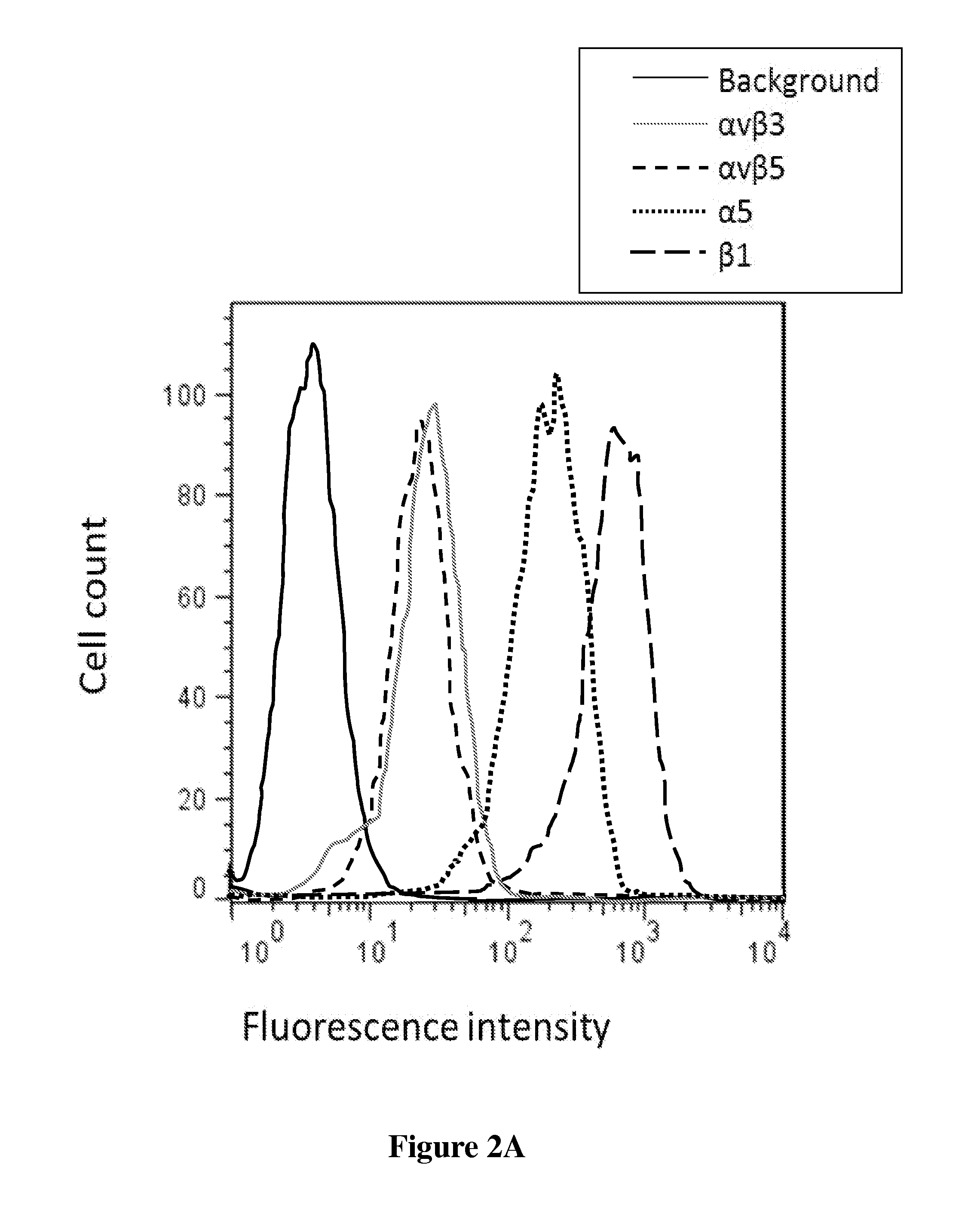Conjugated knottin mini-proteins containing non-natural amino acids
a technology of knottin and amino acids, applied in the field of knottin miniproteins, can solve the problem of rare improvement of the therapeutic
- Summary
- Abstract
- Description
- Claims
- Application Information
AI Technical Summary
Benefits of technology
Problems solved by technology
Method used
Image
Examples
example 1
Knottin Monomers
[0097]The aminooxy group was substituted for Lys15 in EETI2.5F and Arg38 in AgRP7C since previous studies demonstrated flexibility of these positions.11, 30 See SEQ ID NOs; 3, 5 and 8.
[0098]These knottin monomers were prepared by incorporating the aminooxy residue 2-amino-3-(2-(aminooxy)acetamido)propanoic acid into the polypeptide using solid phase peptide synthesis with an Fmoc-protected version.
example 2
Dimerization of Knottin Monomers
[0099]Because various lengths of diamine chains were readily available from vendors, the dialdehyde cross-linkers were prepared by conjugating two 4-formyl benzoic acid groups (4FB) to a diamine chain (FIG. 1A, 1B). 4,9-Dioxa-1,12-dodecanediamine (1) was chosen as the diamine chain to provide up to an approximately 13 Å distance between two covalently linked knottins since a shorter spacer length may hinder the dimeric interaction between the ligand and the receptor.21, 25 4 FB was coupled to 1 with dicyclocarbodiimide and HOBt in CH2Cl2 at 0° C. for 2 h.
[0100]The compound 2 was purified with reverse phase HPLC (RP-HPLC) in 76% yield and conjugated to knottins containing an aminooxy residue (3) in phosphate buffer at 25° C. (FIG. 1B). After 1.5 h of incubation, the dimeric knottins (4) were purified with RP-HPLC in 96% yield (Table 1).
TABLE 1Characteristics of knottin monomers and dimersRP-HPLCaESI-MSbPeptideRt (min)[M + H]+calc[M + H]+expDialdehyde3...
example 3
Competition Binding Assay
[0101]Competition binding assays were performed to measure the relative binding affinities of engineered knottins to U87MG cells expressing αvβ3, αvβ5, and α5β1 integrins (FIG. 2A, 2B, 2C). 2×105 U87MG cells were incubated at 4° C. for 10 h in integrin binding buffer (20 mM Tris pH 7.5, 1 mM MgCl2, 1 mM MnCl2, 2 mM CaCl2, 100 mM NaCl, and 0.1% BSA) and varying concentrations of the peptides with 0.25 nM of Alexa488-labeled EETI 2.5F as a competitor for dimeric and monomeric EETI 2.5F, and 5 nM of Alexa488-labeled AgRP 7C as a competitor for dimeric and monomeric AgRP 7C. Half-maximal inhibitory concentration (IC50) values were determined by nonlinear regression analysis using KaleidaGraph (Synergy Software), and are presented as the average of three separate experiments.
[0102]As shown by the IC50 values, the apparent binding affinities of EETI2.5F and AgRP7C dimers increased by approximately 46- and 4-fold compared to the monomers, respectively (Table 2).
TAB...
PUM
| Property | Measurement | Unit |
|---|---|---|
| Fraction | aaaaa | aaaaa |
| Fraction | aaaaa | aaaaa |
| Electric charge | aaaaa | aaaaa |
Abstract
Description
Claims
Application Information
 Login to View More
Login to View More - R&D
- Intellectual Property
- Life Sciences
- Materials
- Tech Scout
- Unparalleled Data Quality
- Higher Quality Content
- 60% Fewer Hallucinations
Browse by: Latest US Patents, China's latest patents, Technical Efficacy Thesaurus, Application Domain, Technology Topic, Popular Technical Reports.
© 2025 PatSnap. All rights reserved.Legal|Privacy policy|Modern Slavery Act Transparency Statement|Sitemap|About US| Contact US: help@patsnap.com



